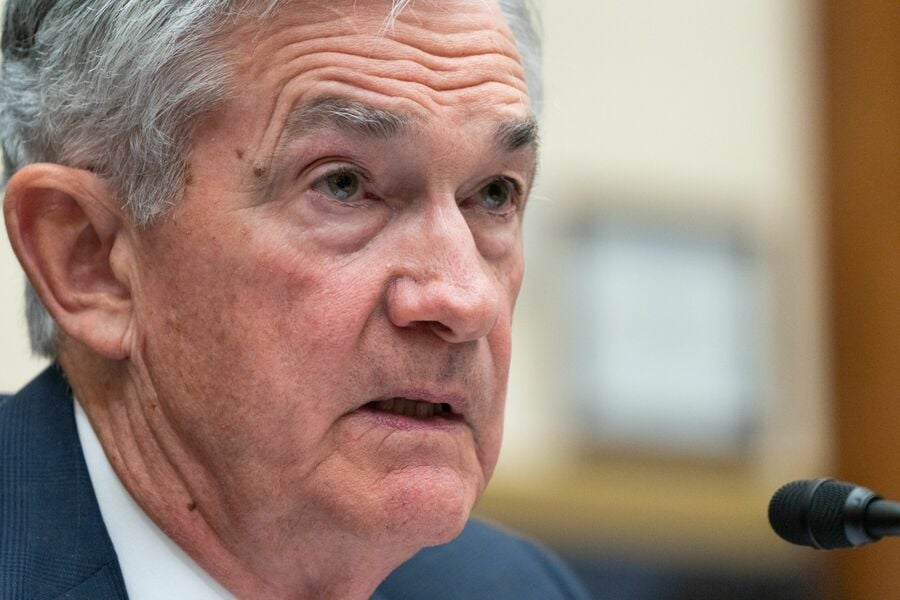

Federal Reserve Chair Jerome Powell reiterated to lawmakers that the US central bank is in no rush to cut interest rates until policymakers are convinced they have won their battle over inflation.
In testimony before a House panel Wednesday, the Fed chief said it will likely be appropriate to begin lower borrowing costs “at some point this year,” but made clear officials are not ready yet.
The remarks echoed a consistent message from nearly every Fed official in recent weeks: The economy and labor market are strong, meaning policymakers have time to wait for more evidence that inflation is headed back to their goal before cutting rates.
“The committee does not expect that it will be appropriate to reduce the target range until it has gained greater confidence that inflation is moving sustainably toward 2%,” Powell told the House Financial Services Committee, adding later that officials would approach the decision “carefully and thoughtfully.”
The Fed chief was on Capitol Hill for the first of two days of his semiannual monetary policy testimony. He’s scheduled to testify before the Senate Banking Committee on Thursday.
Republican lawmakers used the face-time with Powell to slam the Fed’s plan to boost capital requirements for big banks, and urged him to scrap the current proposal – a move Powell said he wouldn’t rule out. And Democrats warned that high rates are putting homeownership out of reach for many Americans, and implored him to lower borrowing costs.
“We need the Fed to start cutting because, like the rent, interest rates are too damn high,” Rep. Ayanna Pressley of Massachusetts said.
Treasury yields moved lower during the day in the wake of Powell’s comments and stocks climbed, while the dollar was lower.
Fed officials are in the last rounds of an aggressive fight to contain inflation. After raising their benchmark federal funds rate more than five percentage points starting in March 2022, they’ve held rates steady since July amid easing price pressures.
Central bankers are now grappling with how soon and how far they should lower rates. Cut too early, and officials worry they could fuel a pick-up in economic activity that keeps inflation above 2% — the rate they see as appropriate for a healthy economy. Keep borrowing costs elevated for too long and they risk tipping the economy into a recession.
“If the economy evolves broadly as expected, it will likely be appropriate to begin dialing back policy restraint at some point this year,” Powell said in his prepared remarks, but added that “ongoing progress toward our 2% inflation objective is not assured.”
Asked later when the Fed might be ready to cut, Powell said, “We think because of the strength in the economy and the strength in the labor market and the progress we’ve made, we can approach that step carefully and thoughtfully.”
Powell also said the Fed is likely to significantly change its plan to require large lenders to hold more capital.
“I do expect there will be broad and material changes to the proposal,” he told lawmakers on the House Financial Services Committee Wednesday.
Powell said that no decisions had been made, but that it was possible regulators could withdraw the plan proposed last July and propose a new version. “It’s a very plausible option,” he said.
The plan, from Fed vice chair for supervision Michael Barr, would ramp up capital requirements for big banks by almost 20%, and has drawn intense criticism from GOP lawmakers and the banking industry.
Inflation slowed to a 2.4% rate for the 12 months ending in January, down from a peak of 7.1% in June 2022. But price pressures accelerated from December, and an underlying measure often cited by Powell — services prices excluding shelter and energy — is still tracking higher than its pre-pandemic trend.
At the same time, demand for workers has remained strong, with employers adding 353,000 jobs in January and economists forecasting another 200,000 added in February.
Fed officials have said high interest rates should continue to ripple through the economy and eventually slow growth, which has been surprisingly robust over the past year. Still, some forecasters have lifted their estimates for economic output in the first quarter, due to expectations for higher consumer spending.
Policymakers have responded to the economy’s surprising strength by indicating that they’ll hold rates at a high level and, once they begin cutting, will probably lower them at a slower and potentially less regular pace than in the past.
Since their January meeting, officials have pushed back aggressively on expectations that they will cut rates when they meet on March 19-20. Investors are now betting the first rate cut will come in June. Policymakers will release updated rate projections at their meeting this month.
Lawmakers asked Powell several times Wednesday about commercial real estate risk. He said the Fed has looked at banks with high concentrations of commercial property holdings and asked if they have plans to reprice those assets at a potential loss. “You have to have the capital and liquidity and a plan” to absorb potential losses, he said.
He also called the emptying of city centers a “secular change,” a signal that remote work has permanently changed demand for office space and downtown retail space.

Former Northwestern Mutual advisors join firm for independence.

Executives from LPL Financial, Cresset Partners hired for key roles.

Geopolitical tension has been managed well by the markets.

December cut is still a possiblity.

Canada, China among nations to react to president-elect's comments.
Streamline your outreach with Aidentified's AI-driven solutions
This season’s market volatility: Positioning for rate relief, income growth and the AI rebound
